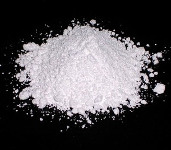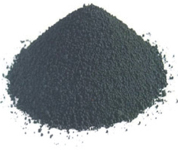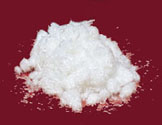Fillers are any material added to another material, to improve quality, reduce cost, or both. Unfortunately, the term “filler” has often taken on the connotation of something used to cheapen products. Contrary to this, fillers can be very important ingredients when it comes to improving the physical properties and chemical resistance, which results in more efficient and effective sealing devices.
Fillers can take the form of powders, fibers, or a combination of the two.

Barium Sulfate
- Commonly called “Barytes”
- Natural and mined from the Earth, or can be synthetically manufactured
- Good resistance against almost all fluids, except for concentrated sulfuric acid
- Used in rubber products, compressed gasketing, and GYLON® Style 3510

Carbon Black
- Same characteristics as carbon/graphite
- Not recommended for temperatures over 850°F (450°C) in oxidizing atmosphere, or for strong chemical oxidizers
- Used in some rubber products and compressed gasketing to enhance properties, such as chemical resistance

Ceramic
- Fibrous, aluminosilicate filler material
- Generally used for high-temperature, low-pressure applications, where sealability is not a primary concern
- Does not interlock and densify under compressive stress, unlike other non-asbestos materials
- Used in spiral wound gaskets
- Valued for high-temperature capability to 2000°F (1090°C)
Flexible Graphite
- Used in tape form as a filler in spiral wound gaskets
- Excellent chemical resistance and fire safety
- Temperature capability to 950°F (510°C) depending on grade of flexible graphite and application
- Material makeup, such as leachable halogen content, can be controlled
- Ideal for nuclear applications
PTFE
- Widely used in GYLON® and spiral wound gaskets
- High chemical resistance, low permeability
- Especially successful in hydrocarbon alkylation units in refineries and in food-related industries
- Temperature limitation with this material; not fire-safe
Silica
- Natural material (sand)
- Many different structures, all with similar properties
- Recommended for most all fluids except inorganic fluorides, like hydrofluoric acid, and strong caustics

